Jump to:
What is Ombre hair color and how is this color technique different from others? Don’t worry – we’ll show you the Ombre basics from application to maintenance, give you gorgeous examples, and highlight variations of the Ombre technique. Ready? So are we – let’s get started!
Considering Ombre Hair?
If you have questions about ombre hair color, you’re in the right place. Ombre colors are unique, have a gorgeous two-toned effect, and work with almost any color hair. And the color possibilities are endless. But they require a stylist with the skill to perfectly execute a soft color transition.
And ombre color isn’t for everyone. This color technique can be high-maintenance, requiring regular touch-ups. It’s also more expensive than basic color techniques because the application is time-consuming and more complex. It’s difficult to properly apply color in a smooth gradient with no harsh lines.
But when ombre is done right, it’s *chef’s kiss.*
Learn all you should know about ombre color – what it is, its popular variations, average cost, inspiration photos, tips to consider, and maintenance guidelines – in our complete guide.
What Is Ombre Hair Color?
Ombre is a gradient hair coloring technique that is sometimes confused with Balayage. Ombre (which means “shadow” in French) hair color gradually transitions from a darker base color at the roots and midshaft to a lighter color at the tips.
It usually involves two colors, but three or more can be used to create complex color gradients. Any color can be used in the two-toned Ombre technique, but it’s common to see a progression from darker shadow roots to a lighter color at the tips.
The Ombre look has only been growing in popularity over the last few years. It’s a common choice for anyone who likes the soft, blended look of the freehand Balayage technique but wants a bolder color shift at the ends.
Ombre hair color requires a little artistry in the freehand application. Since two or more colors need to be gradually blended in a gradient, experienced stylists use a flicking upward motion during application of the lighter lower color to achieve a clean transition with no harsh lines.
Ombre Variations
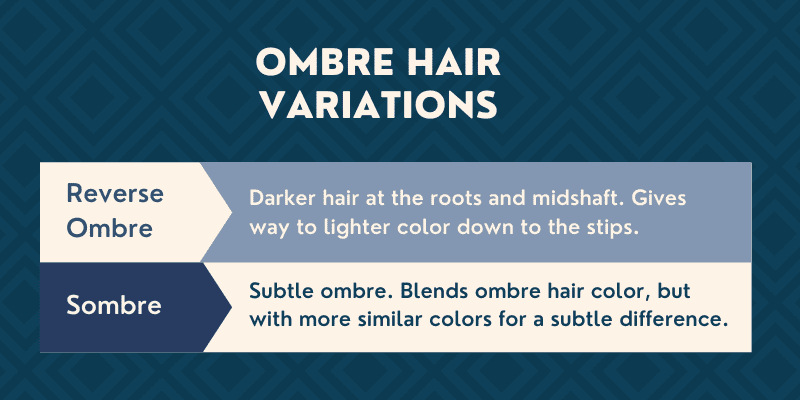
There are a couple variations of the Ombre color technique, including reverse Ombre and Sombre. Let’s look at those techniques and how they’re different from the basic Ombre.
Reverse Ombre
In a typical Ombre color, darker hair at the roots and midshaft gives way to a lighter color from the midshaft down to the tips. With reverse Ombre color, the color order is reversed. Now, the lighter color is at the roots and midshaft and gradually blends into a darker color from the midshaft to the tips.
The reverse Ombre technique has a built-in disadvantage with the lighter hair color placed at the roots. While the traditional Ombre technique can avoid the appearance of tell-tale roots for a while, reverse Ombre makes darker roots obvious when they grow in against a lighter color.
This means frequent root touch-ups are required unless your hair color is very light naturally. Reverse Ombre may start with any light hair color on top (like blonde, light red, gray, or light brown) and transition into a deeper or vivid color at the tips (like dark brown, red, black, or bright colors).
Sombre
Sombre is short for “subtle Ombre,” and it’s one of our favorite looks. Sombre hair color uses the same technique and blending as Ombre hair color, but the colors used are more similar, so the difference between them is subtle.
Instead of a drastic, high-contrast transition from light blonde to dark brown, Sombre colors might transition from a caramel blonde to a chestnut brown. This low-contrast look is very similar to balayage.
The main difference between Sombre and Balayage is that Balayage is done with freehand highlights that don’t completely color the tips of the hair. Sombre hair color is not usually done with highlights. This technique completely saturates the tips of the hair past the chosen color transition point.
How Much Does Ombre Color Cost?
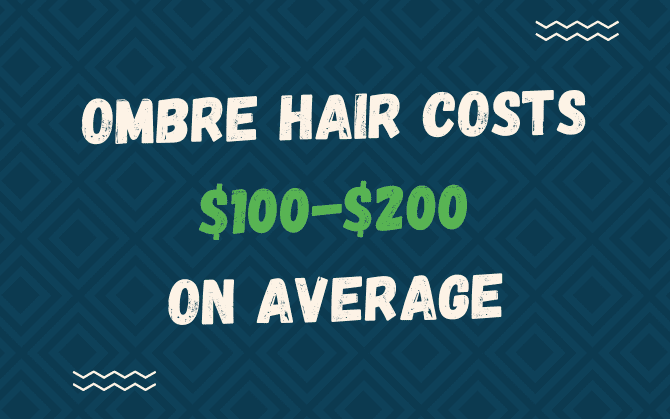
Ombre hair color is fascinating and unique, but before you book your appointment, it’s good to know how much this color technique will cost you. Since Ombre is an advanced hair coloring technique, it’s more expensive than a single-process all-over color.
While every salon prices its services differently, we’ve found that the average cost for Ombre hair color at salons in the United States starts around $150 and up.
In general, you can expect to pay somewhere between $100 and $200 for Ombre hair color. The cost is usually higher in large cities or when done by a master colorist with exceptional training and skills.
The ombre price could be higher or lower depending on a few factors:
- Salon location and stylist experience
- Hair length, thickness, and condition
- How many colors and toners are used
- If additional services (like color correction, lowlights, etc.) are added
Knowing how much you can expect to pay for ombre hair color is a good place to start when you’re considering getting this done. If you’re still on board, check out a few examples of ombre color below.
7 Gorgeous Ombre Examples
Let’s take a look at some of our favorite Ombre examples. We really love this look because there’s so much variation. You can truly make your ombre color your own by choosing unique shades of colors that go well with your skin tone. Let these pretty Ombre examples inspire you!
Platinum Blonde Ombre
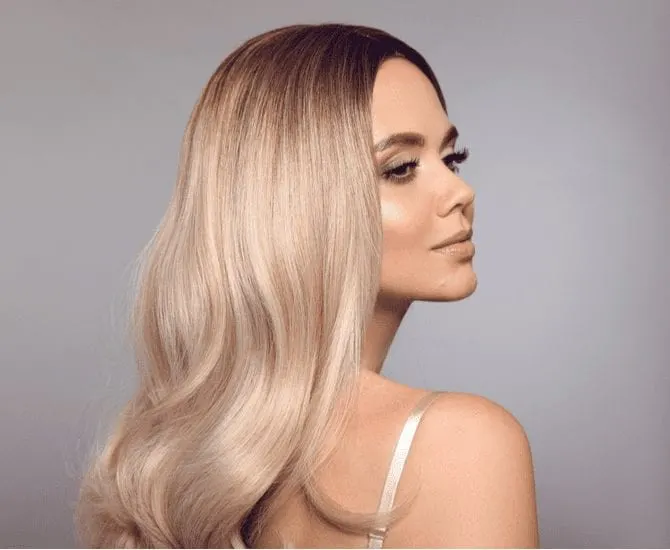
VAndreas/Shutterstock
Darker roots open into a shimmering platinum blonde for an eye-catching look that requires a lot less root maintenance than going platinum all-over. This Ombre color combo has serious luxe vibes.
Chocolate Brown to Strawberry Blonde Ombre
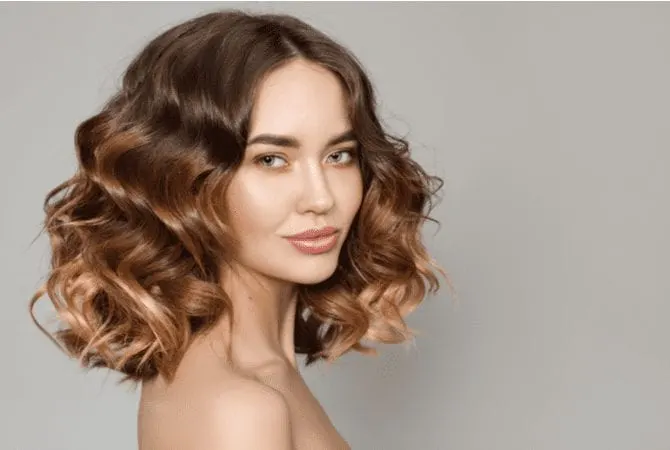
Kourdakova Alena/Shutterstock
We love this unexpected color combo. The medium brown shade gradually transitions into light auburn at the roots, which gives way to a sparkling strawberry blond color at the tips. With these Old Hollywood-style waves, the finished look is polished and elegant.
Golden Brown to Honey Blonde Ombre
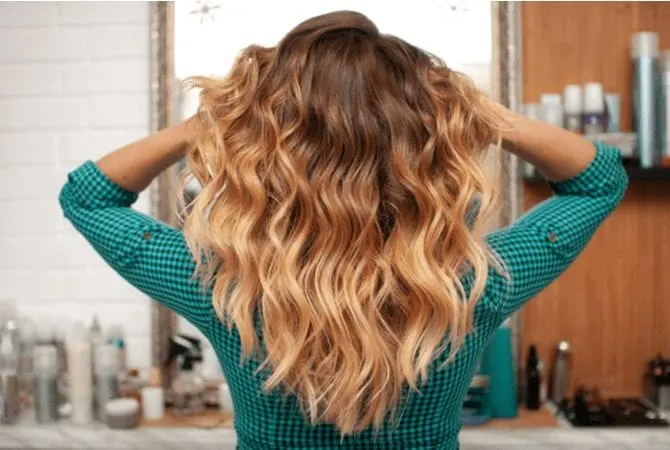
Oksys001/Shutterstock
Perfect for warm skin tones, this golden brown color at the roots transitions out to a light auburn color, then a summery honey blonde. Beachy, loose waves perfectly complement this Ombre color combination.
Ash Brown to Silver Ombre
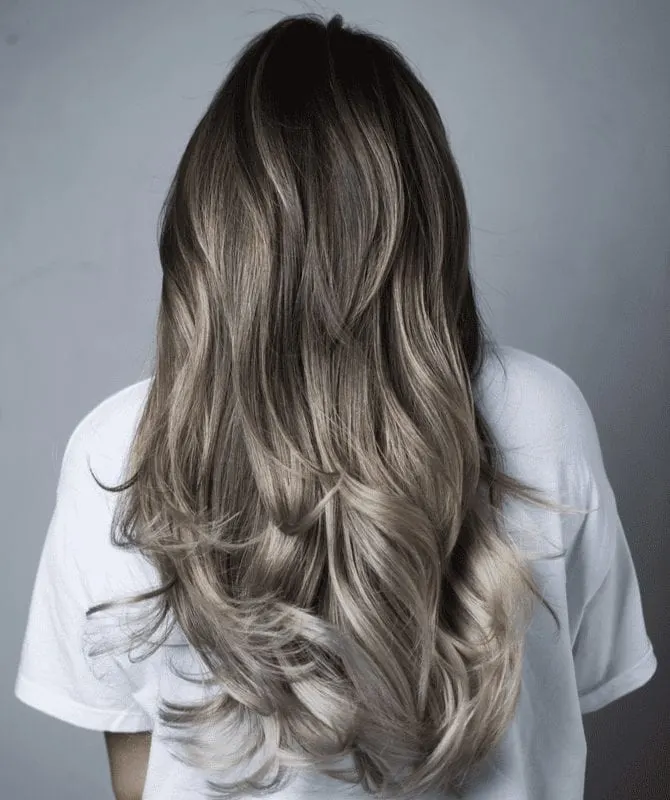
Retan/Shutterstock
This ash brown into silver Ombre could be the perfect combination. The cooler-toned colors make it suitable for anyone with a cool or neutral skin tone, and we love the subtle transition from a deep, cool brown to an almost iridescent silver at the tips.
Ultraviolet Purple to Bubblegum Pink Ombre
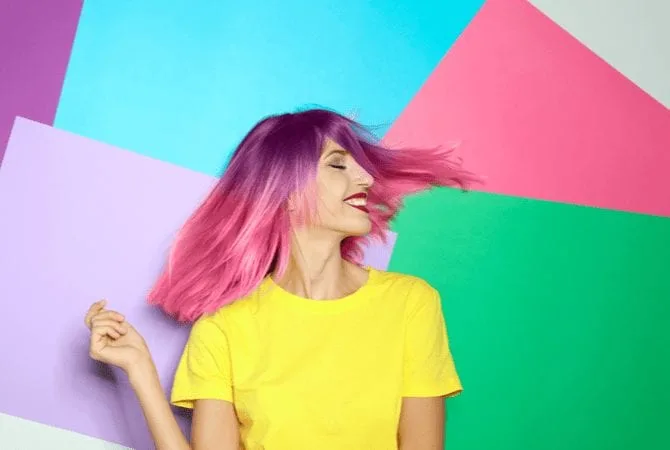
New Africa/Shutterstock
For the daring and adventurous among us, this vivid purple and pink color combo makes a pretty ombre that definitely stands out. Any bright color combo can be used with the Ombre technique – feel free to get creative!
Toffee Blonde to Platinum Sombre
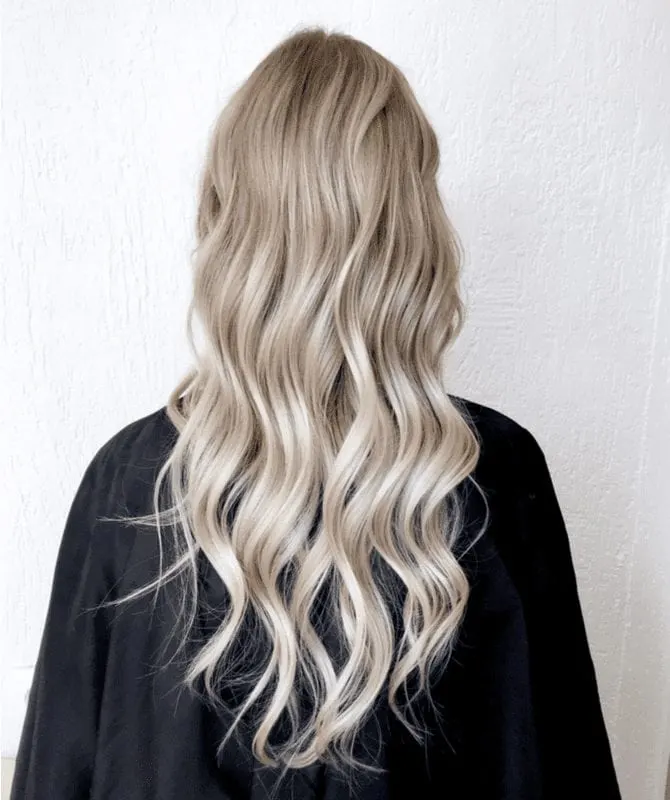
Shumskaya Tatiana/Shutterstock
We love a good Sombre – subtle Ombre – and this one steals the show. Gorgeous toffee blonde with a silvery glint subtly graduates into a sparkling platinum blonde. The colors here are similar and blended so well, the effect is almost natural.
Mocha Brown to Neon Pink Ombre

Ann Haritonenko/Shutterstock
If you’re open to vivid color options, the Ombre possibilities are endless. We love the contrast of a deep mocha brown and a bright neon pink in this example! Paired with blunt bangs and a straight texture, this is such a fun look.
Choosing Your Ombre Colors
If you want Ombre hair color, choosing the color combination is one of the best parts! But it can also be a little overwhelming. You don’t want to make the wrong choice or end up with two clashing colors. Follow these three easy steps to pick the perfect Ombre colors for you.
1. Pick Your Ombre Technique
When you decide to get an Ombre color, you have a few basic choices for how you want the colors applied.
- Traditional Ombre
- Sombre
- Reverse Ombre
You can opt for a traditional two-toned Ombre with a darker color up top and a lighter color midway down to the ends. You could choose a Sombre, which is the more subtle version of an Ombre color, or a reverse Ombre, which puts the lighter color up top and the darker color at the ends.
The technique is up to you, but consider the maintenance and root touch-up requirements of a reverse Ombre if that’s something you’re considering.
2. Consider Your Color Preferences
Once you know the technique you want done, start deciding on the general color scheme you want for your Ombre. Brown to blonde is a very popular choice for Ombre colors, but you can always get more creative with it!
Maybe you’d like a red to brown or blonde, black to blonde, or black to red. For Sombres, we love a single-color transition like deep blonde into a lighter platinum blonde or cocoa brown into chestnut brown.
The best way to get an idea of the colors you want? Doing lots of photo research for inspiration! Get online and search for Ombre examples to see some of the color combos out there. You might be surprised which colors look great together, like ash brown and silver.
3. Pick the Shades According to Your Skin Undertone
Once you know which colors you want to work with for your Ombre color, you can finally settle on the specific shades of each color. You’ll want to use your skin undertone to determine the shades that will be the most flattering for your coloring.
- Warm undertones: Look best in gold jewelry, tans easily, veins appear greenish
- Cool undertones: Look best in silver jewelry, may sunburn easily, veins appear bluish
- Neutral undertones: Gold or silver jewelry are flattering, may tan or sunburn easily, veins may appear greenish or bluish
Warm undertones should choose warmer shades. So if you want brown in your Ombre, opt for a warm chestnut, burgundy, or golden brown instead of a cooler tone like ash brown.
Cool undertones look best in cooler shades. So if you like blonde in your Ombre color, opt for an icy platinum or ash blonde instead of honey blonde or strawberry blonde.
Neutral undertones have it all – they look great in both warm and cool colors. You can choose any shade of the colors you like best for your Ombre. Lucky you!
How to Maintain Ombre Hair Color
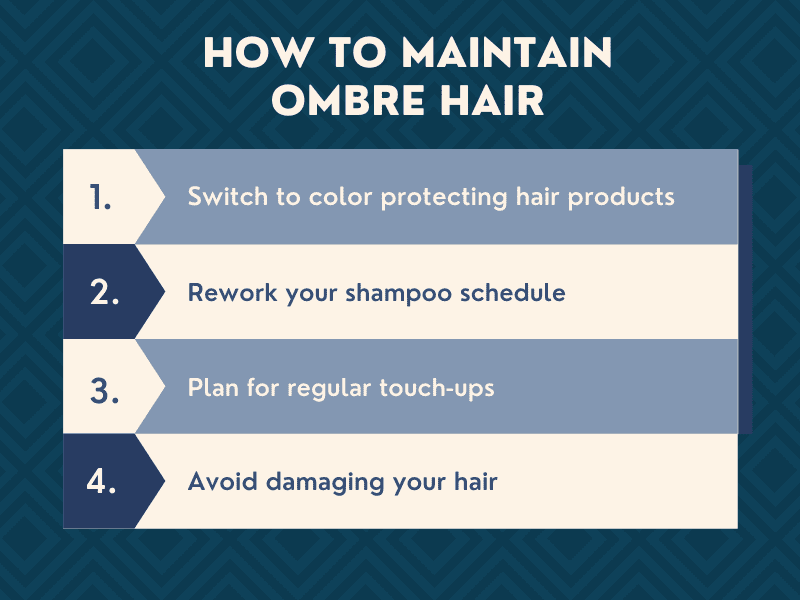
The final thing to consider about Ombre hair color is the maintenance it involves. The level of maintenance required really depends on each specific case, but in general, Ombre hair color is a pretty low-maintenance color option. Here’s what you’ll need to do to keep your Ombre color looking fabulous.
Plan for Regular Touch-Ups
You’ll need color touch-ups every 6-8 weeks or so, assuming you kept your natural color at the roots. If your stylist colored your root area and lightened your hair from the midshaft to the ends, you may need more frequent root touch-ups as your natural roots grow in.
If you chose a reverse Ombre with lighter roots, more frequent root touch-ups are just a fact of life. Sombres, because the color transition is much more subtle, may only require touch-ups every three months or so.
Switch to Color Protecting Hair Products
Making a switch, even temporarily, to color-protecting hair products will help extend the life of your Ombre color. Color-safe shampoo, conditioner, mousse, gel, curl cream, deep conditioning treatments, and hair masks are all available.
These products have a gentler formulation to protect hair color and prevent premature fading or color stripping. Look for indicators that a product is safe to use on colored hair, like the words color-safe, safe for color-treated hair, color protection, etc.
Rework Your Shampoo Schedule
Shampooing too often, even with color-safe shampoo, will gradually fade your Ombre color. If you’re washing daily or every other day, you may want to rework your shampoo schedule.
Experts recommend washing your hair only as much as needed, which can range from every other day for fine, oily hair to just once a week for coarse, curly hair. Cutting back on shampoo frequency helps protect your color from fading and keeps it looking vibrant.
Avoid Damaging Your Hair
Damage is hard to avoid because it can happen due to heat, the elements, hair products, aggressive brushing or styling, chemical processing, and more. But after you get your Ombre color done, you’ll want to steer clear of common sources of hair damage to keep your color fresh and vivid.
- Lay off the hot tools for a while if you can. If you must use a hair dryer, curling iron, or flat iron after getting your color, make sure to use a good heat protection spray first.
- Avoid brushing or styling aggressively, brushing while your hair is wet, or using nylon bristles that can tug on and break hair strands. Opt for a boar bristle brush for the most damage protection.
- Wear a hat if you’ll be in the sun for an extended period of time. UV rays can and will damage your hair and fade your hair color fast.
- Wear a swim cap if you’ll be swimming in chlorinated water. Chlorine fades hair color.
- Don’t get a perm, straightening treatment, or any other chemical services performed after your Ombre color. Chemical processes like these can instantly fade your hair and will cause more damage. If you must get a texture treatment, do it a few weeks before getting your color done.
The Ombre hair color technique is unique, gorgeous, and a cinch to maintain when you know what to expect. If you’re ready for a new look and have a great stylist you trust, what are you waiting for? It’s Ombre time!
